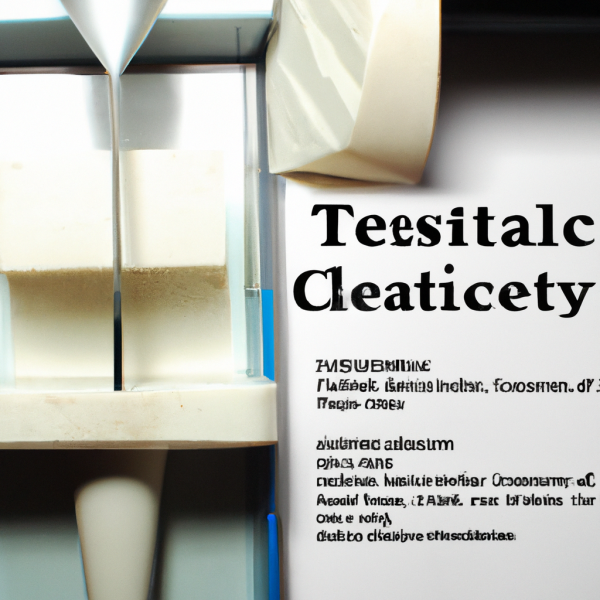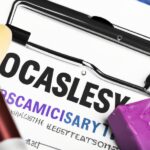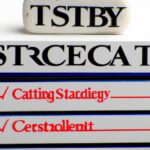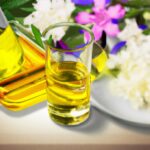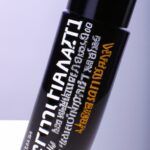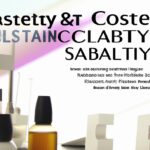Making Your Luxury Cosmetics Experience Last – Cosmetic Stability Testing Methods
Luxury cosmetics are made with the best possible ingredients and crafted with utmost attention to detail, allowing us to enjoy a truly special experience. Costly and often infused with active compounds, these items have to be manufactured using the most reliable techniques. To ensure that, the cosmetic development and production processes include analyzing and testing the stability of the cosmetics.
When talking about luxury cosmetics, one cannot overlook cosmetic stability testing. It is essential to ensure that the resulting products are safe to use, that they contain all of the desired ingredients, and that they guarantee the sought-after effects and outcomes. Each product or formulation is tested according to a series of protocols designed to help us understand and properly assess the stability of a given cosmetic item.
What is cosmetic stability testing?
Cosmetic stability testing is a process used to evaluate a cosmetic formulation’s resistance to external influences that can lead to deterioration or evaporate the active ingredients within. This process aims to check whether the product composition can hold up over time when exposed to contaminants, natural elements, humidity, light, and heat. When a product is stable, it keeps its appearance, form, and scent from the manufacturing process all the way through to the point of purchase for the customer.
Objectives of cosmetic stability testing
Cosmetic stability testing is more than just ensuring the product’s aesthetics. It also looks at other aspects, such as its chemical makeup, microorganisms, potential contamination, sensory qualities (overall feel, smell, and taste), and even its packaging integrity. It also looks at the efficacy of any active ingredients, such as colorants, sunscreens, and other performance components in order to guarantee that the promised results will be achieved.
How is cosmetic stability testing performed?
Cosmetic stability testing helps manufacturers understand how their products will stand up to changes in temperature, humidity, light, and air. As cosmetic products are used directly on the skin and come in contact with a variety of environmental conditions, they must be clinically tested to ensure they meet safety requirements.
The most common method used to test cosmetic stability is an accelerated shelf-life test. In this test, the formulation is tested under extreme temperatures and humidity conditions to replicate what can be expected of the product over extended periods of time. In this way, it is possible to study the expected shelf life of a product and the changes it will go through over time.
The impact of storage conditions on cosmetic stability
In addition to the accelerated shelf life test, cosmetic stability of stored products must be evaluated to ensure that the product does not become unstable due to any inappropriate storage conditions. A wide range of variables can affect the cosmetic stability of stored products, so these needs to be considered, such as temperature, light, oxygen, humidity, and air pressure.
These environmental factors can cause oxidative and/or hydrolytical degradation of the product, as well as the reduction of preservatives and active ingredients that provide efficacy and safety effects. Products should also be checked for any sign of contamination or alterations during these evaluation processes.
Common tests performed
Cosmetic stability tests typically involve checking the product’s composition, texture, and appearance, as well as checking for any bacteria growth or changes in ph. Certain tests may also involve checking for microbial contamination and assessing the product’s overall microbial stability.
Among other tests, the following are commonly performed to test the stability of cosmetics:
• Physical/Organoleptic Tests
These tests assess the stability of a product’s physical characteristics, such as its opacity, color, viscosity, aroma, and pH. It also involves checking the product’s packaging and containers for any leakage.
• Thermal/Structural Tests
Thermal testing helps evaluate the product’s integrity in the presence of heat, by simulating changes that can be expected during the physical storage, transportation, and shipping of a product. In this way, manufacturers can make sure that the product is able to withstand any such potential temperature changes without losing any of its active ingredients.
• Chemical Tests
Chemical tests are used to assess potential changes to the product’s chemical composition. This might include the assessment of active ingredients and preservatives, as well as heavy metal contaminations, and any other undesired compounds.
• Microbiological Tests
Evaluating the cosmetic’s microbiological stability helps identify any microbial growth or contamination that could potentially occur. Contamination can cause a range of issues, and so testing helps determine whether additional measures, such as the addition of preservatives, is needed to keep the product safe to use.
Conclusion
Cosmetic stability testing is essential to ensure that the end results are safe to use and that they maintain their desired effects over time. With so many environmental factors to consider, it is important to go through a comprehensive testing plan to ensure the stability and efficacy of luxury cosmetics.
Whether it be handling the physical and chemical structure of the product, or its microbiological stability, each of these tests protect not just the product, but also the customer. With these tests in place, customers can rest assured that your brand’s luxury cosmetics will offer them an experience which matches their high expectations.
Advancing Cosmetic Stability Testing for Superior Product Quality
The Importance of Advanced Cosmetic Stability Testing
In the competitive world of luxury cosmetics, ensuring product excellence is paramount. Advanced cosmetic stability testing methods play a crucial role in achieving superior product quality. By subjecting cosmetic formulations to rigorous testing protocols, manufacturers can deliver cosmetics that maintain their desired effects, appearance, and safety over an extended period. Let’s explore some innovative techniques that are revolutionizing the field of cosmetic stability testing.
Advanced Analytical Techniques for Comprehensive Evaluation
To unlock the full benefits of cosmetic stability testing, manufacturers are increasingly utilizing advanced analytical techniques. These cutting-edge methods provide deeper insights into the chemical composition, physical structure, and microbial stability of cosmetic products. By employing state-of-the-art technologies, such as gas chromatography-mass spectrometry (GC-MS), high-performance liquid chromatography (HPLC), and microbial identification systems, manufacturers can achieve unparalleled accuracy and reliability in their stability testing processes.
Real-time Monitoring with Spectroscopy
One exciting development in cosmetic stability testing is the integration of spectroscopic analysis. Spectroscopic techniques, including infrared (IR) spectroscopy and Raman spectroscopy, allow real-time monitoring of cosmetic formulations. By analyzing the molecular vibrations and chemical bonds within the product, spectroscopy provides valuable information about stability, degradation, and potential contamination. This non-destructive and time-efficient approach enables manufacturers to make data-driven decisions throughout the production and storage phases.
Accelerated Aging Simulations for Precise Predictions
Accelerated aging simulations have long been a staple of cosmetic stability testing. However, recent advancements have made these simulations more accurate and predictive than ever before. Manufacturers now utilize state-of-the-art environmental chambers that can precisely replicate extreme temperature and humidity conditions. By subjecting cosmetic formulations to accelerated aging tests, manufacturers can obtain reliable predictions of long-term stability, allowing them to optimize product formulations and packaging designs accordingly.
Enhancing Safety through Packaging Integrity Testing
Packaging plays a vital role in preserving the stability of luxury cosmetics. To ensure the integrity of packaging, manufacturers employ advanced testing methods specifically designed for this purpose. Non-destructive techniques, such as leak detection systems and vacuum decay testing, allow manufacturers to identify any flaws or vulnerabilities in packaging seals. By maintaining airtight packaging, luxury cosmetics can remain protected from environmental factors that may compromise their stability and efficacy.
Ensuring Microbial Safety with DNA Sequencing
Microbial contamination is a significant concern in cosmetic products, as it can lead to safety issues and product spoilage. Traditional microbial testing methods, such as agar plate culture, are being complemented by innovative approaches like DNA sequencing. By analyzing the microbial DNA present in cosmetic formulations, manufacturers can identify and characterize microorganisms with exceptional accuracy. This advanced technique helps ensure the effectiveness of preservation systems and enables manufacturers to take appropriate measures to prevent microbial growth.
Regulatory Compliance and Consumer Confidence
In addition to enhancing product quality, robust cosmetic stability testing is crucial for regulatory compliance and building consumer confidence. Regulatory bodies around the world require comprehensive stability data to ensure the safety and efficacy of cosmetic products. By adhering to stringent testing protocols and utilizing advanced techniques, manufacturers can meet these regulatory requirements and provide consumers with the assurance that their luxury cosmetics are reliable and safe to use.
Embrace the Power of Advanced Cosmetic Stability Testing
In the fast-paced world of luxury cosmetics, staying ahead of the competition requires a commitment to excellence in product quality. By embracing advanced cosmetic stability testing methods, manufacturers can unlock the full potential of their formulations, delivering cosmetics that exceed customer expectations. From real-time monitoring with spectro
scopy to accelerated aging simulations and DNA sequencing for microbial safety, these cutting-edge techniques empower manufacturers to create exceptional products that stand the test of time.
Investing in advanced cosmetic stability testing not only ensures regulatory compliance but also builds trust and loyalty among consumers. When customers choose luxury cosmetics, they expect an exceptional experience that lives up to the brand’s promise. By harnessing the power of advanced stability testing, manufacturers can confidently deliver on those expectations, securing their position as industry leaders and providing customers with cosmetics that truly elevate their beauty routines.
Remember, excellence is not a destination but a continuous journey. Stay at the forefront of cosmetic stability testing, embrace innovation, and let your luxury cosmetics shine with unwavering quality and efficacy.

